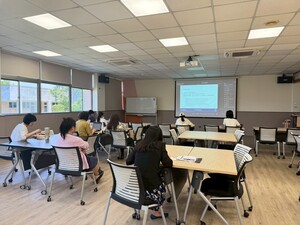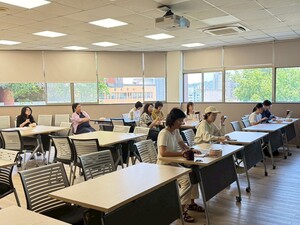Innovations and Developments in Chinese Language Teaching in the Age of AI



【Article by Chinese Language Center】
On April 30, the Chinese Language Center (CLC) invited Professor Ninghui Liang, Senior Lecturer in the Department of East Asian Languages and Literatures at Yale University, to give an online talk on how AI can assist in classroom instruction.
Professor Liang has taught at Yale since 2002 and previously served as the Director of the Yale Chinese Program. In 2023, she was awarded the Creative Innovation Award by the New England Chinese Language Teachers Association and currently serves as the Vice President of the Chinese Language Teachers Association, USA. She is also the co-author of Chinese for Current Affairs and Transitions: Developing Chinese Fluency: Intermediate Chinese, as well as author of multiple academic publications.
During her time at Yale, Professor Liang began exploring AI integration in the classroom just as AI technology began to emerge rapidly. Benefiting from Yale’s rich educational resources, she became one of the early adopters of AI in language teaching. She hopes to share her years of teaching experience and practical insights on using various AI tools with current and future Chinese language educators.
This event attracted a diverse group of participants, including current CLC instructors, MA and PhD students in Chinese education, and more than 140 online attendees from around the world—teachers, scholars, and students in the field of Chinese language education.
Is AI Integration Necessary in Chinese Language Education?
Professor Liang pointed out that today’s Gen Z learners grew up with smartphones and social media, are highly familiar with digital communication, and prefer fast-paced, visual, and engaging formats. Traditional teaching methods are increasingly ineffective in holding their attention. These learners are also more autonomous, wanting to customize their learning based on personal interests and needs.
She emphasized, “If we teach today’s students with yesterday’s methods, we are stealing their future.”
Innovations in Chinese Language Teaching with AI
Professor Liang stressed that the teacher’s role is not only to deliver knowledge but to empower students with lifelong learning and problem-solving skills—areas where AI can serve as a powerful tool. She demonstrated how AI can rapidly generate vocabulary lists, grammar explanations, reading and listening materials, and situational dialogues and activities tailored to different levels, significantly reducing lesson prep time and increasing classroom engagement. For example, teachers can use AI to determine the HSK or ACTFL level of a reading and adjust the material accordingly for differentiated instruction.
Transforming Student Learning and Teacher Assessment
For students, AI platforms like MagicSchool can be used to set learning goals, recommend practice exercises, and provide speech or writing corrections, acting as a personal tutor. This greatly reduces the grading burden on teachers. Regarding the new challenges or risks of improper use, such as plagiarism, tools like Google Docs with Draftback and DocuViz extensions can be used to maintain fairness in assignments.
Lastly, Professor Liang emphasized that the integration of AI should follow the three principles of being "free, simple, User-friendly" and that technology should complement teaching methods, not replace teachers. She encouraged educators by stating, "Rather than waiting for AI to progress, contribute to technological development with a critical and evaluative perspective." This motivated teachers to enrich themselves and benefit from the powerful tools available.
The lecture provided much inspiration to the attendees, showcasing the potential of AI technology in Chinese language teaching and its limitless possibilities for future development.


 Fax:886-2-29379611
Fax:886-2-29379611